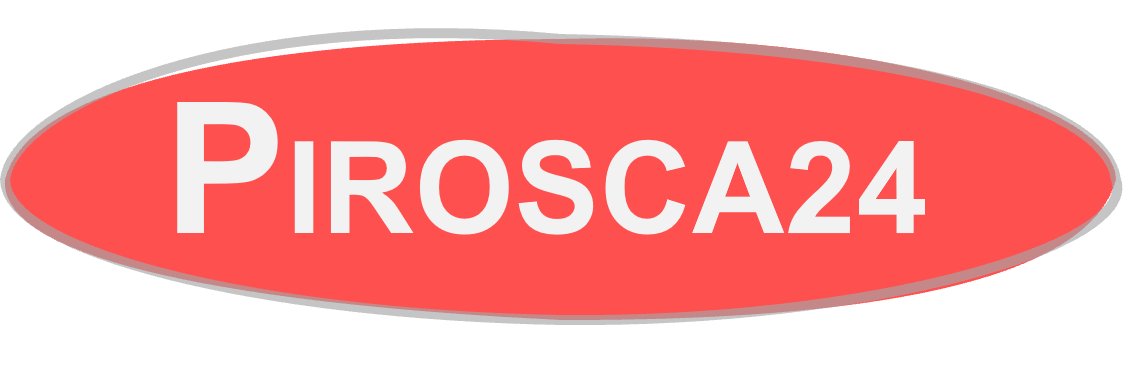Introduction to citation methods and their importance in scientific papers Citation is the practice of acknowledging the sources of information used in academic work. This includes naming the authors and their works, as well as providing relevant details such as title, publication date and page numbers[1]. The importance of citation lies in its ability to appreciate the original authors and provide evidence for the claims made in the paper. Citing the source makes scientific papers more credible and trustworthy, and readers can verify the information presented[2]. In scientific papers, citation is of paramount importance. It helps to avoid plagiarism and ensures that the work is original and based on credible sources. Scientific papers include statements from other publications by means of direct and indirect quotations, which are to be marked as citations[3]. Proper citation also helps to distinguish between the author’s own ideas and those of others, which is essential in scholarly writing[4]. By citing sources, scholarly papers can also contribute to ongoing discourse and knowledge development in a particular area[1]. Various citation styles are used in academic writing, including APA, AMA, Harvard, MLA, and the German citation style[5]. Each citation style has its own set of rules and guidelines for formatting and referencing sources[1]. For example, the APA citation style requires the author’s last name and year of publication to be included in the in-text citation, while the Harvard citation style requires the author’s last name and page number[6]. It is important to choose the appropriate citation style for each subject area and to adhere to its guidelines[7]. This ensures that the paper is not only accurate and credible, but also in line with the established conventions of the field[8]. To facilitate the process of citation, various citation programs are available, such as Citavi, EndNote, Zotero, and others[9]. In conclusion, citation is an essential part of scientific papers. It gives credibility and originality to the work, helping to distinguish between the author’s own ideas and those of others. There are several citation styles to choose from, and it’s important to choose the appropriate style for each subject area. By citing the source correctly, scientific work can contribute to the further development of knowledge in a particular field. APA Citation Method and its Application in Scientific Papers The American Psychological Association (APA) citation style is one of the most commonly used citation styles in academic papers[10]. It provides guidelines for formatting and referencing sources in academic writing. The APA citation style is widely used in the social sciences and is also used in other fields. The style is designed to ensure that sources are cited correctly and consistently, providing readers with the information they need to locate the original source[8]. APA-style in-text citations require the author’s surname and the year of publication of the source. If you are quoting directly from a source, you must also include the page number(s) of the citation[1][11]. For example, an in-text citation for a direct citation would look like this: (Smith, 2010, p. 25). If you are paraphrasing or summarizing information from a source, all you need to do in the citation is include the author’s last name and the year of publication[12]. The APA-style “References” section is a list of all the sources you have cited in your paper[1]. It should be formatted alphabetically according to the author’s last name and contain all the necessary information so that the reader can find the original source. The information required for each source varies depending on the type of source, but generally includes the author’s name, publication date, source title, and publication information[10][13]. It is important to ensure that all sources in the “References” section are cited correctly and consistently, as this will allow readers to verify the information contained in your paper[3]. MLA Method and its Application in Scientific Papers The MLA citation style is widely used in academic papers and is internationally recognized[14]. It provides a clear and consistent method for citing sources in scientific texts, ensuring that all references are accurately documented and easily traceable[15]. In the MLA citation style, in-text citations are used to credit sources within the body of the paper, while the “Works cited” section provides a comprehensive list of all sources used in the paper[16]. This style is particularly suitable for English-language academic papers, including bachelor’s and master’s theses[17]. MLA-style in-text citations typically consist of the author’s name and the page number(s) from which the information originated[16]. These quotes can be placed in parentheses or integrated into the sentence itself[18]. For example, a parenthetical quote might look like this: (Smith 23), while an inserted quote might look like this: According to Smith, “.” (23). It is important to ensure that citations in the text are accurate and complete, as they provide readers with the necessary information to find the source in the section with the works cited[19]. The MLA-style cited works section provides a comprehensive list of all sources used in the paper[16]. This section should be arranged alphabetically by the author’s last name and include all relevant publication information such as title, publisher, and publication date[17]. It is crucial to ensure that all sources are properly formatted and that the information provided is accurate and complete[3]. By adhering to the guidelines for in-text citations and the section on cited works, authors can ensure that their academic papers meet the high standards of academic integrity and accuracy. ChicagoCitation method and its application in scientific papers The Chicago citation style is a commonly used citation method in academic writing. It includes both a footnote or endnote system and a name-date system, making it a versatile option for researchers in various fields[20]. The footnote or endnote system cites sources with short references or footnotes, while the name-date system inserts the author’s name and publication date into the text. In scholarly papers, the footnote or endnote system is often preferred, as it allows for more detailed referencing and avoids interrupting the flow of text[21]. In-text citations are a crucial part
Overview of scientific work: Systematic literature research, evaluation of expert interviews according to Mayring, statistical evaluation of online interviews
Introduction to systematic literature review Systematic literature review is a fundamental step in scientific work where researchers identify and evaluate relevant literature and studies to answer their own research questions and support their work[1]. The definition and purpose of literature review is to gain a comprehensive understanding of the current state of research on a particular topic or question and to uncover possible knowledge gaps or research needs[2]. The process of literature review involves finding, compiling, and analyzing published information and studies in order to track research progress in a particular area and critically evaluate the quality and relevance of the identified literature[3]. Identifying relevant literature requires a thorough and systematic search of various sources such as scientific databases, books, journals, and online platforms[1]. Several factors must be taken into account to ensure that the selected sources are actually relevant and valid for one’s own research work. These include, but are not limited to: – The use of appropriate search terms and strategies to make the search effective and targeted – Assessing the quality and credibility of the sources, for example by checking the author’s qualifications, year of publication and citation frequency – Taking into account different perspectives and opinions in order to obtain a balanced and comprehensive picture of the state of research[3]. The critical evaluation of the literature is another important step in the process of literature review, in which researchers assess the quality, relevance, and reliability of the identified sources[2]. The aim is not only to check the methodological quality of the studies, but also to evaluate their contribution to the understanding of the research topic. Some aspects that should be considered when critically evaluating literature include: – The clarity and validity of the research question or hypothesis – The adequacy of the methods and analytical procedures – The quality and representativeness of the data – The coherence and comprehensibility of the reasoning and results – The limitations and possible bias of the studies[4]. By applying these criteria to the critical evaluation of literature, they can ensure that their own work is based on solid and reliable evidence and makes a valuable contribution to scientific research[3]. Conducting expert interviews according to Mayring Expert interviews are a valuable method for gathering detailed, qualitative data from knowledgeable sources within a specific subject area or subject area [2]. The main purpose of these interviews is to obtain specific information, opinions, and insights that can help answer specific research questions or address complex problems [4]. Conducting expert interviews using Mayring’s qualitative content analysis method ensures a systematic and structured approach to the evaluation and interpretation of the collected data, which can ultimately increase the quality and validity of a research project [3]. To conduct expert interviews effectively, researchers need to follow several important steps. This includes the planning and preparation, the conduct of the interview, the transcription of the interview and finally the analysis of the data using the method of qualitative content analysis according to Mayring [2]. Proper planning and preparation includes identifying suitable experts, developing clear research questions, and deciding on the appropriate interview format (e.g., face-to-face, phone, or online) [3]. During the interview, researchers should focus on building a relationship with the expert, asking open-ended questions, and actively listening to the expert’s answers [5]. After the interview, the researcher must transcribe the recorded conversation, which means that the audio or video recording is converted into a written document that can be analyzed more easily [6]. The analysis of expert interviews according to Mayring’s qualitative content analysis requires a systematic and structured process of coding and categorizing the textual data [7]. This method can be divided into four main steps: implementation, coding, inductive categorization, and summary of results [2]. Implementation requires splitting the textual data into manageable units, while encoding requires assigning codes to those units based on specific themes or themes [1]. Inductive category formation is about developing categories from the coded data, which can be achieved through a step-by-step process, as described in Mayring’s much-cited book [8]. Finally, the purpose of summarizing the results is to draw conclusions from the categorized data that will help answer the research question and feed into the overall results of the scientific work [1]. By following this structured approach, researchers can ensure a thorough and rigorous analysis of expert interview data and ultimately contribute to the credibility and reliability of their research findings [9]. Statistical analysis of online interviews Online interviews, also known as web-based interviews or internet interviews, are an increasingly popular method of data collection in qualitative and quantitative research. This includes conducting interviews with research participants via online platforms such as video conferencing software, chat rooms or email[10]. The main purpose of online interviews is to gather in-depth information and insights from respondents that can be used to explore complex topics, understand individual experiences, or evaluate expert opinions[3]. Online interviews allow researchers to access a wide range of participants, overcome geographical barriers, and reduce the costs associated with traditional in-person interview methods[11]. There are several advantages and disadvantages associated with online interviews. Key benefits include: – Flexibility in scheduling and conducting interviews, allowing researchers to cater to participants’ availability and time zones[11]. – Reduced costs as online interviews eliminate travel expenses and venue bookings[11]. – The ability to reach a wider range of participants, including those who may be geographically dispersed or have limited access to traditional research environments[11]. – Increased anonymity, which can lead to more honest and open responses from participants[3]. However, online interviews also have some drawbacks: – Potential problems with the technology, such as poor internet connections, software bugs, or difficulty navigating online platforms[11]. – Challenges in building rapport and trust with participants, as non-verbal cues and body language are often limited in online settings[5]. – Greater difficulties in ensuring the privacy and confidentiality of participants, especially when discussing sensitive issues[4]. When analyzing data from online interviews, researchers can use various statistical methods to identify patterns, trends, and correlations within the information collected.



